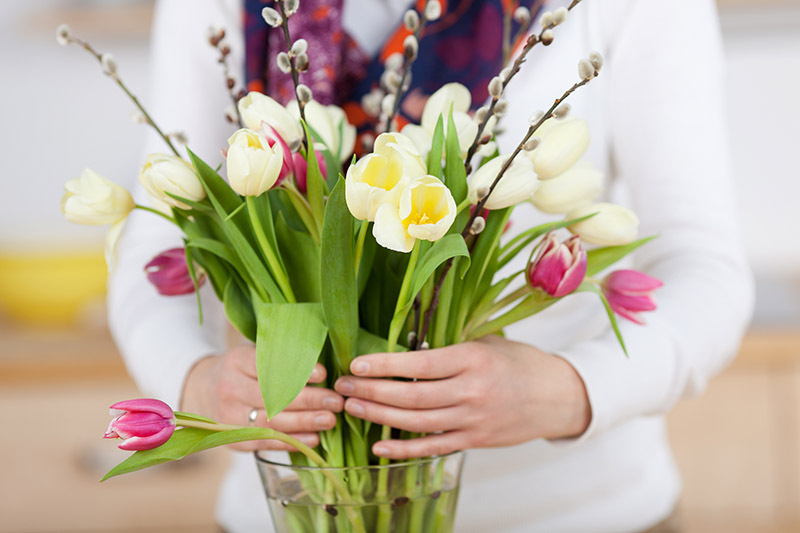Simple Habits That Help Poinsettias Last Past the Holidays
Poinsettias are a hallmark of the holiday season, bringing vibrant red, white, and pink hues to homes and office spaces. Yet, for many, the challenge lies in maintaining their beauty well beyond the holidays. Do you find yourself discarding poinsettias in January, uncertain how to help them thrive? It doesn't have to be that way.
With some simple habits and a little extra attention, you can keep your poinsettia plants healthy and attractive long after the New Year. This comprehensive guide will walk you through tried-and-true tips, the science behind poinsettia care, and actionable steps to enjoy these festive plants year-round.
Understanding Poinsettias: A Brief Overview
Poinsettias (Euphorbia pulcherrima) are native to Mexico and Central America, where they grow as perennial shrubs. While we primarily know them for their eye-catching "flowers"--which are actually colored bracts--the real flowers are the small yellow or green clusters at the center.
In their natural habitat, poinsettias can grow several feet tall. Indoors, with the right habits and care, these captivating houseplants can thrive for many months, sometimes even years!
The Science Behind Poinsettia Lifespans
- Poinsettias are photoperiodic, meaning they respond to the length of daylight (a key to re-blooming).
- Most people discard them after they fade, but with proper care, poinsettias can survive and rebloom.
- Many common problems stem from improper watering, lighting, or temperature exposure.

Adopting Simple Habits for Extended Poinsettia Health
Let's dive into the essential habits that will help your poinsettias outlast the holidays, retain their color, and possibly re-bloom for next year's celebrations!
1. Choose a Healthy Plant to Start
Long-lasting poinsettias start at the store. Before buying, inspect plants for these signs of health:
- Deep green leaves: Skip any plant with yellowing, wilted, or spotted leaves.
- Intact bracts: Check for full, vibrantly colored bracts without tears or browning edges.
- Sturdy stems: A strong, upright stem typically signals a healthy root system.
- Minimal pollen shed: The true flowers at the center of the bracts should be tightly closed.
Tip: Avoid plants displayed near store entrances or in drafty areas--they are sensitive to cold!
2. Keep Poinsettias Warm (But Not Hot!)
Temperature is crucial for keeping poinsettias happy. These plants prefer a stable environment:
- Ideal: 65-72?F (18-22?C) during the day, no lower than 60?F (16?C) at night.
- Never expose them to freezing temperatures--even a brief chill can cause leaf drop.
- Avoid hot spots: Don't place your poinsettia next to radiators or heat vents.
- Protect from cold drafts and sudden temperature swings.
Habit: Choose a location away from exterior doors, fireplaces, and windows that get chilly at night.
3. Let There Be Light... But Not Too Much
Poinsettias crave bright, indirect light after the holidays, but scorch in direct sunlight. Here's how to get it right:
- Bright, filtered sunlight: Near an east or south-facing window is ideal, with sheers if the light is strong.
- Rotate your plant every few days to ensure even exposure and growth.
- In spring and summer: Move outdoors only if nighttime temperatures stay above 50?F (10?C), and place it in dappled shade.
Quick Habit: Create a reminder to rotate your poinsettia weekly for balanced growth.
4. Water Wisely: Avoid Overwatering and Dry Out
Overwatering is the number one reason poinsettias fail after the holidays. Establish this essential watering routine:
- Check soil moisture: Insert your finger about an inch deep. Water only if the soil feels dry at that depth.
- Drainage matters: Always remove decorative foil or punch holes for drainage. Poinsettias despise soggy roots!
- Never let the pot sit in water. Always empty saucers after watering.
- Stick to room-temperature water to prevent shock.
Habit: Set a weekly reminder to check, not water, your plant. Adjustment is key--more frequent in dry air, less in humid climates.
5. Maintain High Humidity
Central heating dries out indoor air, which can stress your poinsettia. Optimal humidity is around 50-60%. Here's how to keep your plant happy:
- Group with other houseplants to create a microclimate.
- Use a humidity tray: Place gravel in a shallow tray, add water, and set the pot on top (not in the water).
- Lightly mist the leaves a few times a week if air is very dry (but aim for the air around, not the bracts directly).
Quick Tip: If your leaves start curling or browning at the edges, check humidity first!
6. Fertilize After Flowering
Most poinsettias don't need fertilizer during the blooming holiday season. Fertilization should begin in late winter or spring once flowering and bract color fades:
- Use a balanced, water-soluble houseplant fertilizer every 2-4 weeks.
- Always water before feeding to prevent root burn.
- Stop fertilizing by late fall if aiming for re-flowering.
7. Prune For Healthier Growth
Pruning is one of those simple yet powerful habits that can rejuvenate a tired poinsettia:
- In early spring (March-April), once the bracts have dropped, cut stems back to 4-6 inches above the soil.
- Remove faded leaves and stems regularly to prevent disease and promote air flow.
- When outdoors, pinch growing tips monthly until early August to encourage bushiness.
Always use clean, sharp scissors and wear gloves; poinsettia sap can be a skin irritant.
8. Repotting: Give Roots Room to Grow
If your plant gets rootbound or outgrows its container, repotting is key:
- Best time: Late spring or early summer.
- Choose a container 1-2 inches wider than the previous with ample drainage.
- Use a fresh, well-draining potting mix.
- Water thoroughly after repotting and keep out of direct sun for a week while acclimating.
Pro tip: Repotting can invigorate a struggling plant, giving it a second life past the holidays!
9. Protect Against Pests and Disease
Poinsettias are relatively low-maintenance, but watch for these threats:
- Whiteflies, fungus gnats, and spider mites may appear in dry conditions or crowded spaces.
- Remove affected leaves immediately and use insecticidal soap if needed.
- Good airflow and correct watering fend off leaf spot, root rot, and mildew.
10. Encourage Reblooming
The ultimate reward: getting your poinsettia to re-bloom for the next holiday season. It takes a bit of dedication:
- From late September to early December, your plant needs 14-16 hours of complete darkness each night (place in a closet or cover with a box).
- During the day, resume bright, indirect light and maintain watering/fertilizing habits.
- It takes 8-10 weeks of this regimen to trigger bract color change.
Patience pays off! Healthy, well-cared-for plants can reward you year after year.
Frequently Asked Questions About Poinsettia Longevity
How long can poinsettias last after the holidays?
With attentive care, poinsettias can remain attractive for 4-6 months after Christmas. Many gardeners keep them as leafy green houseplants year-round, and with the right reblooming regimen, they can display colored bracts again the following holiday season.
Why are poinsettia leaves turning yellow or dropping?
Common causes include:
- Overwatering (leading to root rot)
- Exposure to cold drafts or rapid temperature shifts
- Insufficient light or overly dry air
Cure: Assess watering, move away from drafty windows, and maintain moderate humidity.
Should I cut back my poinsettia after the holidays?
Yes! Pruning in spring promotes bushier, healthier growth and prevents legginess. Trim all stems to about 4-6 inches from the soil after the colorful bracts fall, then resume regular care.
Can poinsettias be grown outside in summer?
Yes, with caution. Wait until nighttime temperatures are consistently above 50?F (10?C). Acclimate slowly to prevent sunburn, provide dappled shade, and bring back indoors before autumn temperatures drop.

Common Mistakes to Avoid with Poinsettia Care
- Leaving in soggy soil or non-draining foil pots--guaranteed to cause root rot.
- Forgetting to rotate the plant--resulting in uneven, leggy growth.
- Exposing to temperature extremes from open doors, heaters, or fireplaces.
- Neglecting humidity, leading to leaf drop.
- Over-fertilizing in winter or when roots are dry--less is more outside the growing season.
Summary: Enjoy Poinsettias Long After the Festive Season
By adopting these ten simple but effective habits, your poinsettia can be much more than just a holiday decoration. Remember:
- Start with a healthy plant and the right location.
- Keep it warm, watered (but not soggy), and in bright but indirect light.
- Keep up with pruning, occasional fertilization, and monitor for pests.
- Consider the reblooming process for seasonal color year after year.
With continued care and a few mindful habits, your poinsettias can stay lush, green, and beautiful long after the tinsel and lights are packed away. Enjoy this symbol of celebration not just during the holidays but all through the year!
For Even More Success: Share Your Tips!
Do you have your own tried-and-true techniques for keeping poinsettias fresh past the holidays? Share your experiences and tips in the comments below--let's help more gardeners keep their holiday favorites thriving!
Related Articles:

